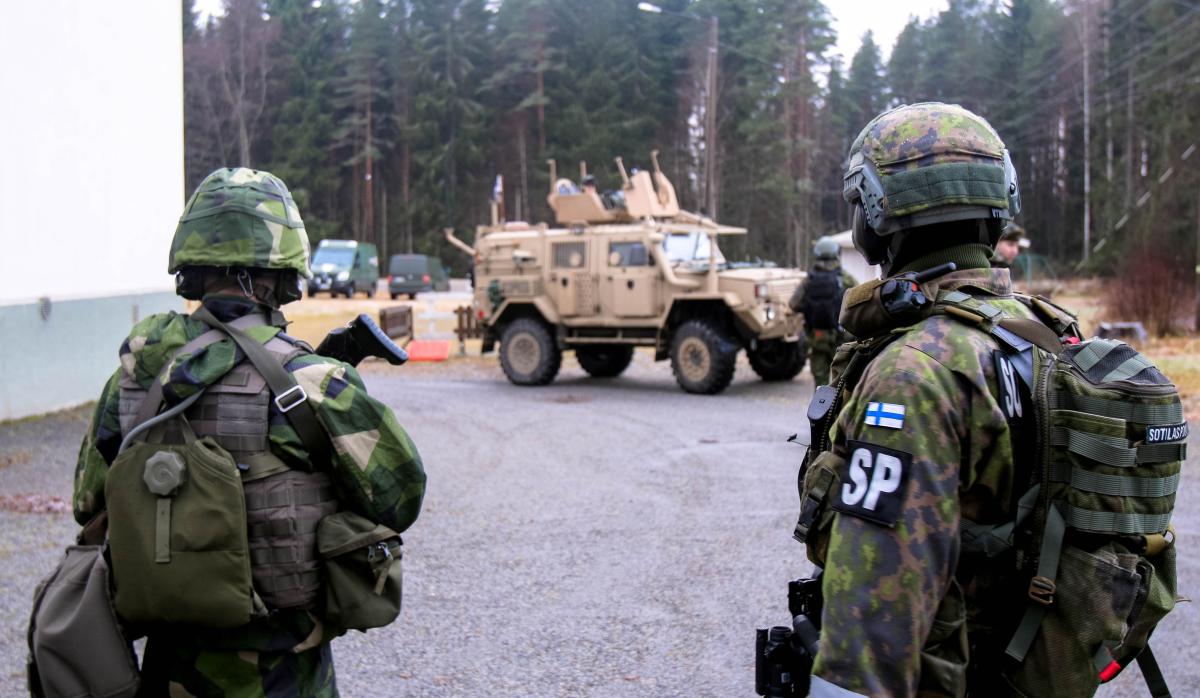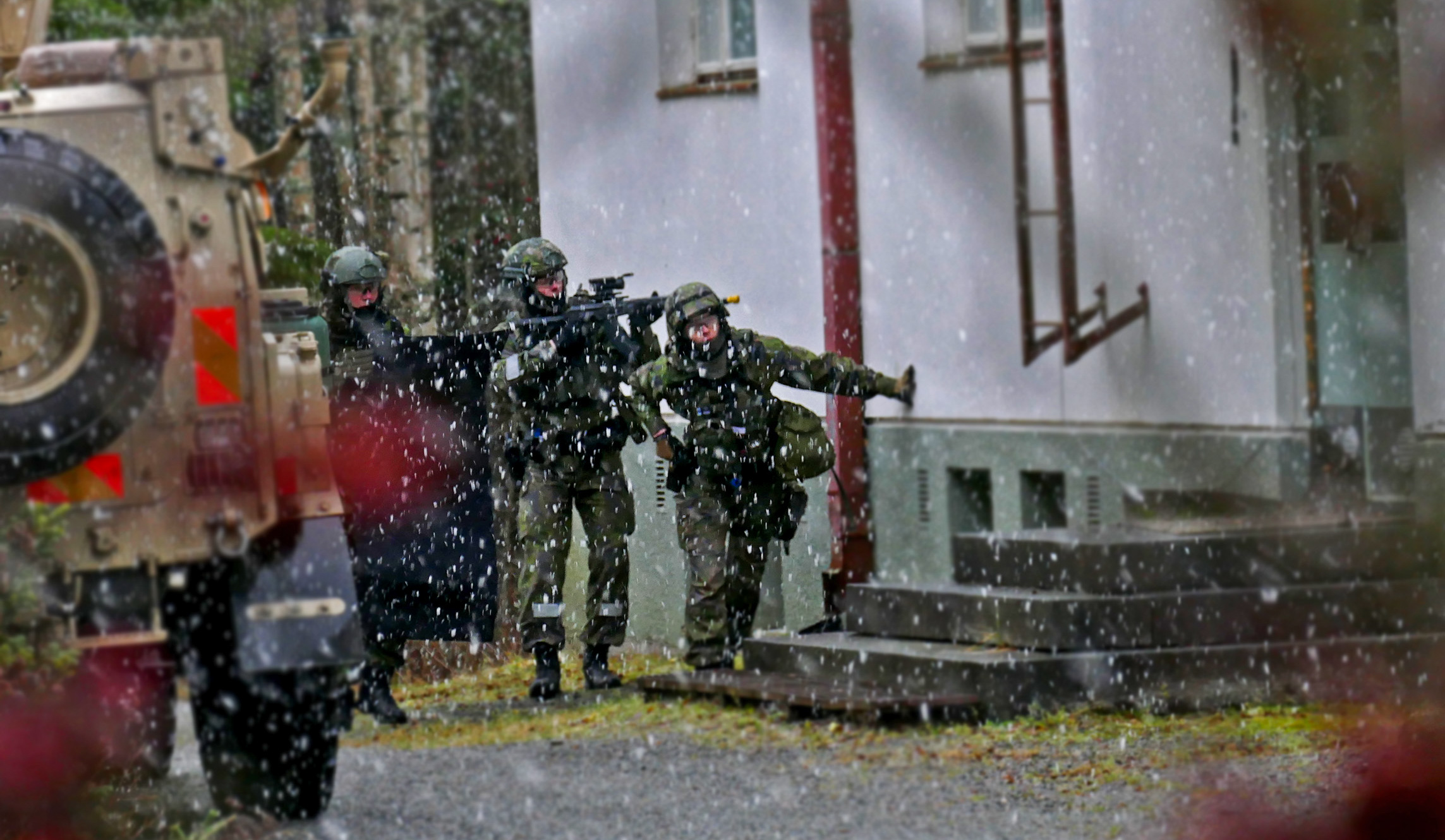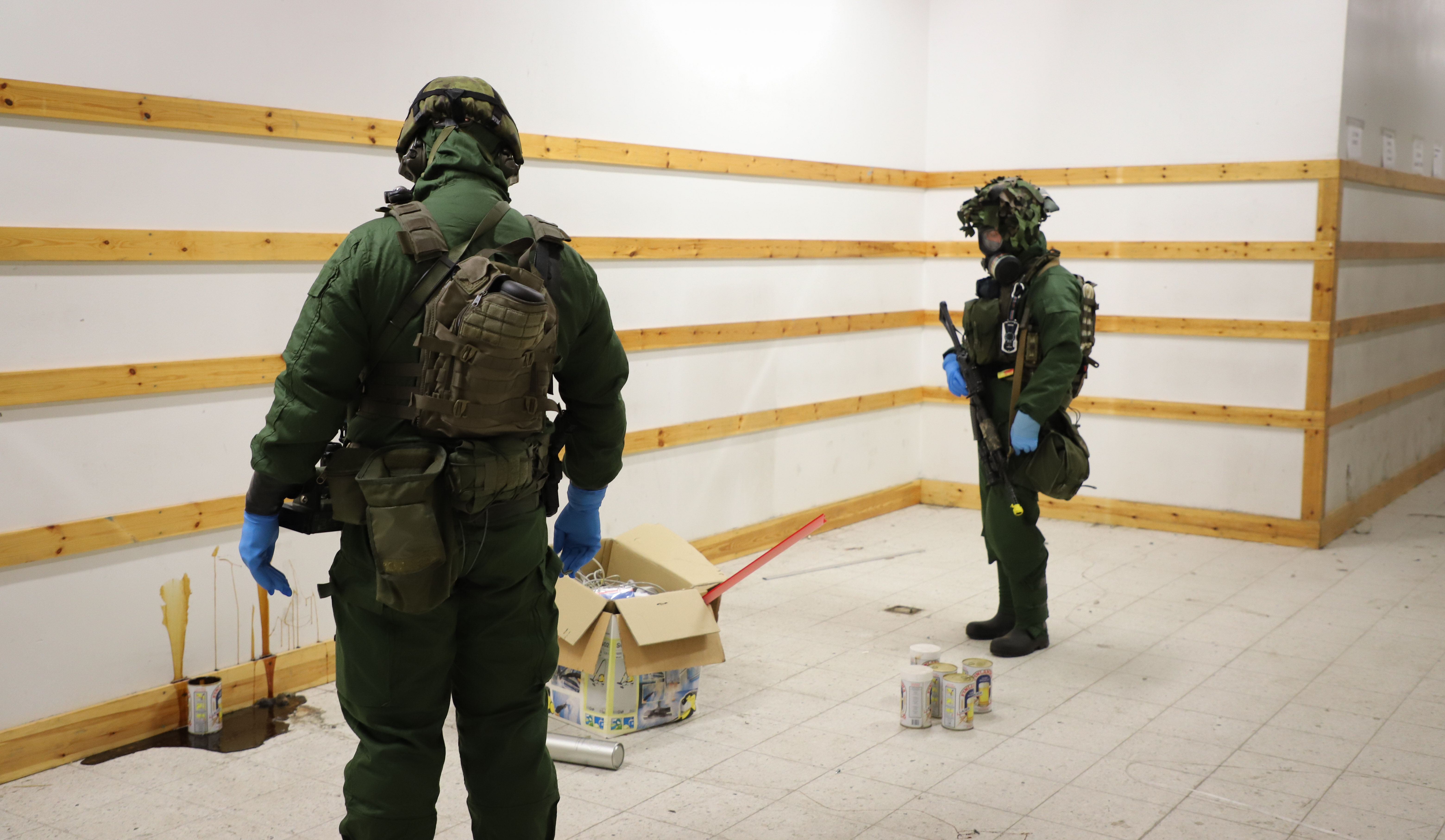Combined efforts against hazardous materials

The Finnish Defence Forces prepare to potential threats posed by the use of hazardous materials, and do so by means of CBRN activities, with the overall objective to increase the readiness to respond to situations involving hazardous materials. As part of the international Reccex 17 exercise, the Finnish Defence Forces, the Police and Nordic subject-matter experts in CBRN defence train inter-authority cooperation while operating in demanding situations.
The Finnish Defence Forces prepare to respond to possible threats posed by the use of hazardous materials (HAZMAT). Sustaining optimal real-time reactionary capability presupposes facilitating training that accounts for responding to versatile threats and allows for determining both the strong points as well as the areas that remain in need of development.

– In this Reccex 17 exercise, the objective is to develop the expertise of the CBRN units concerning operating in demanding CBRN missions in accordance with operating procedures as needed, Captain Jussi-Pekka Niemelä who serves as a research and development officer in the Deployable CBRN Laboratory explains.
The majority of HAZMAT tends to remain non-discernible to our senses prior to the actual surfacing of the adverse effects. Therefore HAZMAT detecting requires utilising various types of detectors and alarms. For instance, the use of protective equipment combined with correct procedures will protect against the threats of CBRN agents.
– Each soldier must master the basic task-dependent CBRN measures. And, in fact, CBRN training is available in all the brigade-level training units. During the basic training period, conscripts are given instruction in the individual soldiers’ CBRN protective equipment sets and protective measures. Soldiers’ CBRN competence includes the correct use of one’s own CBRN protective equipment, warning others and calling for help when necessary. In addition, each soldier is required to be capable of providing aid to a person exposed to CBRN agents.
In the Finnish Defence Forces, subject-matter experts in CBRN defence serve, in particular, in the national Centre of Excellence in CBRN Defence, Garrison Fire Brigades and Energetics and CBRN Technology Division of the Finnish Defence Forces’ Research Establishment. Consequently, the elements of CBRN activities include protection, CBRNe reconnaissance, sample-taking, decontamination measures as well as CBRN defence medical measures and rescue operations.
Inter-authority assistance increases capability
The Finnish Defence Forces engage in active inter-authority cooperation with different authorities in order to prevent potentially dangerous situations.
– The Defence Forces’ CBRN units, equipment and subject-matter expertise in CBRN defence provide support in other authorities’ activities. Inter-authority cooperation under normal circumstances aims at enabling cooperation against possible CBRN threats in both normal and emergency conditions.

The notion of CBRN agents refers to chemical agents and other hazardous chemical substances, biological agents or pathogens, radioactive material as well as nuclear weapons. As regards chemical threats, this threat class comprises especially industrial chemicals with the ensuing threats to either nature or built-up areas. The use of chemical agents is forbidden in compliance with internationally ratified treaties. When it comes to possible biological threats, the classification covers nature’s own pathogens and the weapons designed based on utilising these particles. Moreover, the types of weapons that rely on radiation and fission or fusion reactions seek for impact on target either based on the amount of radiation or energy released in the given reaction. For instance, a nuclear explosive feeds on the energy released in the splitting of the atoms’ nuclei resulting in the explosion.



